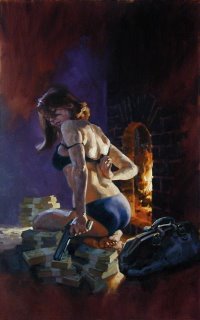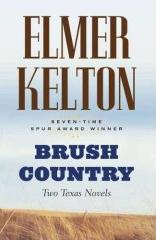The 2006 Shamus Award Nominees are AnnouncedThe Private Eye Writer's of America have announced the 2006 nominees for their annual Shamus Award for best private eye fiction. All of the nominees were published in 2005.
I'm ashamed to admit that I have read only one of the nominated stories--Lee Goldberg's
The Man with the Iron-On Badge, which was a great P.I. novel. Anyway, here are the nominees. (I hope you pictured someone fantasically hot celebrity smoothly delivering that line--I pictured, um, Naomi Watts.)
An interesting aside: two of the five nominees for best paperback original are from independent publisher
Pinnacle. The titles are:
Deadlocked by Joel Goldman, and
The Killing Rain by P.J. Parrish. Not a bad showing.
Best HardcoverOblivion by Peter Abrahams (Wm. Morrow), featuring Nick Petrov.
The Lincoln Lawyer by Michael Connelly (Little, Brown), featuring Mickey Haller.
The Forgotten Man by Robert Crais (Doubleday), featuring Elvis Cole.
In A Teapot by Terence Faherty (Crum Creek Press), featuring Scott Elliot.
The Man with the Iron-On Badge by Lee Goldberg (Five Star), featuring Harvey Mapes.
Cinnamon Kiss by Walter Mosley (Little, Brown), featuring Easy Rawlins.
Best Paperback OriginalFalling Down by David Cole (Avon), featuring Laura Winslow.
The James Deans by Reed Farrell Coleman (Plume), featuring Moe Prager.
Deadlocked by Joel Goldman (Pinnacle), featuring Lou Mason.
Cordite Wine by Richard Helms (Back Alley Books), featuring Eamon Gold.
A Killing Rain by P.J. Parrish (Pinnacle), featuring Louis Kincaid.
Best First NovelBlood Ties by Lori G. Armstrong (Medallion), featuring Julie Collins.
Still River by Harry Hunsicker (Thomas Dunne Books/St. Martin's Minotaur), featuring Lee Henry Oswald.
The Devil’s Right Hand by J. D. Rhoades (St. Martin's Minotaur), featuring Jack Keller.
Forcing Amaryllis by Louise Ure (Mysterious Press – Warner), featuring Calla Gentry.
Best Short Story“Oh, What a Tangled Lanyard We Weave” by Parnell Hall. Murder Most Crafty (Berkley), featuring Stanley Hastings.
“Two Birds with One Stone” by Jeremiah Healy. Alfred Hitchcock Mystery Magazine, Jan/Feb 2005, featuring John Francis Cuddy.
“The Big Road” by Steve Hockensmith. Alfred Hitchcock Mystery Magazine, May 2005, featuring Larry Erie.
“A Death in Ueno” by Michael Wiecek. Alfred Hitchcock Mystery Magazine, March 2005 featuring Masakazu Sakonju.
“The Breaks” by Timothy Williams. Ellery Queen Mystery Magazine, September/October 2005 featuring Charlie Raines.
 I just got my dirty paws on the latest artwork to appear on a future Hard Case Crime novel. It is deliciously lurid and boldly vibrant. The artist is Greg Manchess--he has painted several of the better covers for HCC including: Fade to Blonde, Home is the Sailor, and the forthcoming Michael Crichton novel (published under the pseudonym John Lange) Grave Descend. This beauty reminds me of his cover for Fade to Blonde--my favorite of the HCC covers to date--and it will appear on Gil Brewer's The Vengeful Virgin due out--sigh--March 2007.
I just got my dirty paws on the latest artwork to appear on a future Hard Case Crime novel. It is deliciously lurid and boldly vibrant. The artist is Greg Manchess--he has painted several of the better covers for HCC including: Fade to Blonde, Home is the Sailor, and the forthcoming Michael Crichton novel (published under the pseudonym John Lange) Grave Descend. This beauty reminds me of his cover for Fade to Blonde--my favorite of the HCC covers to date--and it will appear on Gil Brewer's The Vengeful Virgin due out--sigh--March 2007.


